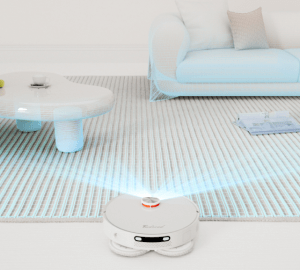We take our vehicles in for regular maintenance. Oil changes, brake inspections and diagnostic checks. We are reminded by the stickers on our windshields and emails or phone calls when the next checkup is due.
How vigilant are we when it comes to the maintenance of our own bodies? We adjust our diets for optimal fuel sources, our sleep cycles are tweaked to ensure maximum performance. Even with all the right combinations of stretching and strengthening, it might be beneficial to climb up onto the hoist and allow a massage therapist to provide a mechanical advantage.
Injury prevention, optimal tissue function and facilitating rehabilitation are some of the benefits of massage therapy.
Monthly appointments can provide your muscles and connective tissues with the added length that long stretches can’t always achieve. Assessment (hands-on) during a treatment can find potential over-use signs before they manifest into debilitating injuries. If acute trauma is addressed in a timely manner, muscle, tendon or ligament damage can be mitigated before the symptoms become chronic.
A massage therapist near me can provide thorough assessment of range of motion and narrow down potential pathology with special tests. Postural imbalances and gait analyses can be performed to help determine which muscles may be compensating or guarding.
Manual manipulation of the soft tissues that allow us to move increases tissue length, improves blood and lymph flow and reduces fascial restrictions. This allows for greater range of motion at the joints and decreases the chance of over-stretch injuries like strains or sprains.
More specifically, fresh fluids and nutrients are transported to the tissues that need them to allow for proper function and facilitate faster repair and recovery. Unnecessary fluids, along with toxins and metabolic wastes, can be flushed from cells with long, repetitive massage strokes.
Massage techniques promote optimal muscle length and flexibility by releasing fascial adhesions and allowing us better movement within our own skin. These adhesions can develop in areas of overuse, trauma or even inactivity. The connective tissue layers of fascia can fasten the skin to underlying muscle and the various aspects of muscles to each other. This can result in sub-optimal movement, like a vehicles engine when it seizes. With the application of specific massage techniques, all of the moving parts can then move in concert or separately when they are supposed to like an efficient machine.
Not everybody expects their body to achieve Olympic level performance just as many of us don’t drive supercars that need constant maintenance. Allowing our bodies to function at the intensities and for the durations that we train and compete at, our expectations are that we can do so in a manner that is efficient and pain-free (like a reliable SUV that rarely needs to go to the mechanic).
For those of us who do push ourselves to achieve athletic distinction, pre-event/race massage helps to activate the musculature and cardiovascular systems to prepare for the upcoming exertion. Once the event/race has been completed, sports massage can help with the recovery process and assess for any injuries that may have been sustained.
Massage can address old injuries that one might not even consider as being associated with current dysfunction or pain. Previously untreated ankle sprains from those skateboard crashes can be contributing to the altered biomechanics of the knee while running 20 years later. That fall from the monkey bars where a shoulder was separated could be part of what is causing the discomfort in that area after long hours in front of a computer.
Unlike with a vehicle where you can replace worn or damaged parts as needed, for the most part, our bodies are not as accessible for such repairs. Even though tendon and ligament repairs in places like a shoulder or knee are possible, as are hip and knee replacements, such procedures are traumatic in their own right. Regardless of the reason for such invasive repairs, the recovery process can be accelerated and be more thorough with the support of massage.
The scar tissue resulting from surgeries such as abdominal procedures, tendon rupture repairs and even open-heart surgeries result in significant scars that can create movement restrictions.
Specific massage techniques such as frictions can help to create more functional scars within damaged tissues (muscles and skin) following injuries and/or surgeries.
Grade 1-4 joint mobilizations using small to medium oscillations can help to reposition vertebrae or ribs that have become misaligned due to things like tight musculature or intense coughing due to asthma or a cold. Joint capsules and the ligaments that support each articulation can be gently stretched to reduce pain and improve range of motion.
Increased range of motion allows for proper biomechanics and utilization of the joint to its full range of motion. If a joint only functions through a restricted range where a small segment of the available surface is stressed, it can potentially wear down the joint surface in a more concentrated area instead of creating more optimal wear over the entire surface at that joint.
With systemic or autoimmune disorders, there are generally more body parts and systems involved. Although massage therapy cannot facilitate the healing of such conditions, benefits such as temporary reductions in pain, return to improved function and better sleep are possible.
Part of facilitating maximize soft tissue health is creating a home/self care plan to further optimize function. Incorporating hydrotherapy (heat/ice), stretching (muscles and superficial fascia), strengthening, and utilizing a foam roller, golf or lacrosse ball can help to accelerate faster recovery. The use of self massage techniques like muscle stripping or compressions can be practiced throughout the day as well. To continue the vehicle maintenance analogy, it would be like changing your cars wiper blades or topping up the fluids in your own garage.
A massage therapist knows how to treat and adjust their pressure, intensity and duration according to the stages of injury: acute, subacute or chronic. More numerous (weekly) appointments may be necessary during acute or subacute stages of an injury while more chronic issues may not necessitate such frequent treatment. Also, massage therapists work together with other health care practitioners to create a maintenance program that works best for each body and the movement requirements necessary for us to perform in whatever way we choose to move through our world.
By GABRIELLA ROZSA




